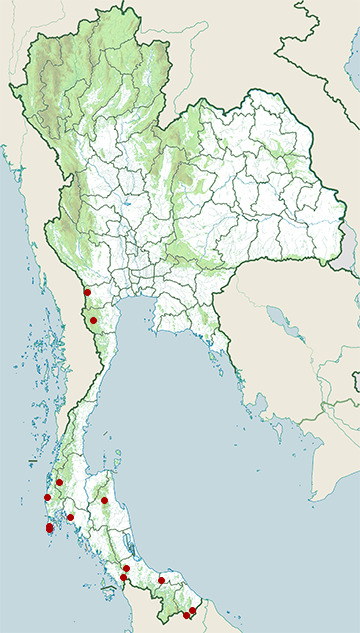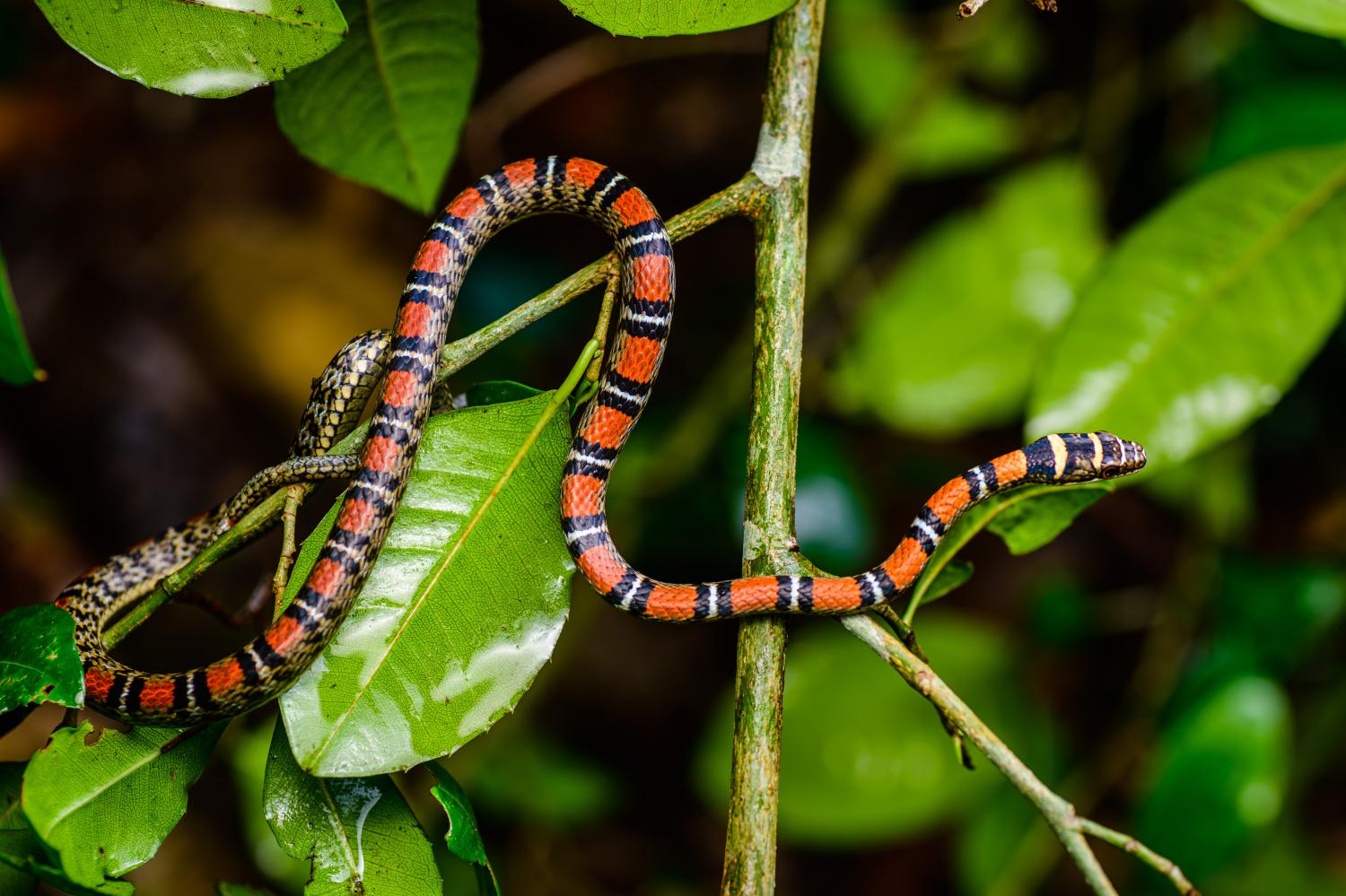Species of Thailand
Twin-barred tree snake
Chrysopelea pelias
(Carolus Linnaeus, 1758)
In Thai: งูดอกหมากแดง (ngu khieow dokmak daeng)
The twin-barred tree snake (Chrysopelea pelias) is a species of snake found in Southeast Asia. It is also called the banded flying snake. It can glide, as with all species of its genus Chrysopelea, by stretching the body into a flattened strip using its ribs. It is mostly found in moist forests and can cover a horizontal distance of about 100 metres in a glide from the top of a tree. It is an oviparous snake.
Chrysopelea pelias begins gliding by jumping in an upward position that seems to be different from the behavior of other limbless vertebrates. This way of moving, as seen in a closely related genus, might have been a behavioral precursor to the evolution of gliding in snakes.
Chrysopelea pelias has an overlapping range with the paradise tree snake (Chrysopelea paradisi) in Malaysia, Singapore, Borneo and Indonesia. However, Chrysopelea pelias is not nearly as common as the paradise tree snake.
Distribution
The twin-barred tree snake is found in Thailand, Malaysia (Malaya, Penang Island, Pulau Tioman, and East Malaysia), Indonesia (Bangka, Java, Mentawai Archipelago, , Natuna Archipelago, Nias, Riau Archipelago, Sumatra, Borneo); Brunei Darussalam; Burma ;India, Western Ghats Singapore.
This article uses material from Wikipedia released under the Creative Commons Attribution-Share-Alike Licence 3.0. Eventual photos shown in this page may or may not be from Wikipedia, please see the license details for photos in photo by-lines.
Scientific classification
- Kingdom
- Animalia
- Phylum
- Chordata
- Class
- Reptilia
- Order
- Squamata
- Suborder
- Serpentes
- Family
- Colubridae
- Genus
- Chrysopelea
- Species
- Chrysopelea pelias
Common names
- German:
- Rote Schmuckbaumnatter
- Gebänderte Schmuckbaumnatter
- English:
- Twin-barred tree snake
- Banded flying snake
- Red tree snake
- Thai: งูดอกหมากแดง (ngu khieow dokmak daeng)
Conservation status

Least Concern (IUCN3.1)
Photos
Please help us review our species pages if wrong photos are used or any other details in the page is wrong. We can be reached via our contact us page.
Range Map

- Hala-Bala Wildlife Sanctuary
- Kaeng Krachan National Park
- Khao Lak - Lam Ru National Park
- Khao Luang National Park
- Khao Sok National Park
- Mueang Krabi District, Krabi
- Mueang Phuket District, Phuket
- Namtok Sai Khao National Park
- Phuket Province
- Suan Phueng District, Ratchaburi
- Thale Ban National Park
- Ton Nga-Chang Wildlife Sanctuary
- Waeng District, Narathiwat


